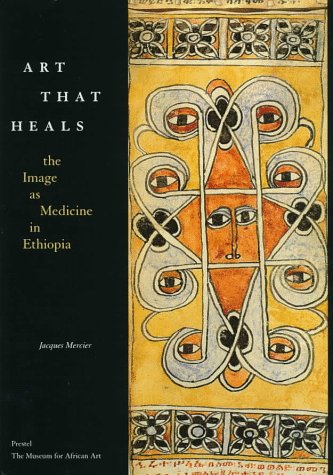African Art
1 total work
This text demonstrates the difference between Westerners' passive admiration of representational images and the intense interaction with art characteristic of native African and American cultures. Westerners may have extended the use of the art-image beyond the purely representational, but in Ethiopia the power transmitted from art to believers is actually used to heal. "Art that Heals" examines a variety of colourful objects: church frescos from the 15th to the 20th century, processional crosses, drawings, codices, and icons - all used by the clergy of the Ethiopian Orthodox Church not as passive objects but as active forces to heal the sick. In particular, the book provides an analysis of key examples of the beautiful parchment scrolls used from the 18th to the 20th century. In Ethiopia when a person is physically, mentally, or spiritually ill a scroll is usually commissioned either by himself or his immediate family. Using a complex iconography developed from various religious traditions (ancient Greek, Christian, Muslim, and Jewish), the priest paints vivid images and writes prayers on the scroll to call upon God and the spirits who have caused the illness.
In addition to abstract talismanic patterns and the frequent use of brightly coloured eyes, the scrolls often depict the story of Solomon or feature pictures of lions and birds. It is the trance induced by staring at this scroll that reputedly heals patients "through their eyes". Investigating the iconography of these objects, this work explains the cultural and spiritual origins of each. These are images which challenge our whole perception of art.
In addition to abstract talismanic patterns and the frequent use of brightly coloured eyes, the scrolls often depict the story of Solomon or feature pictures of lions and birds. It is the trance induced by staring at this scroll that reputedly heals patients "through their eyes". Investigating the iconography of these objects, this work explains the cultural and spiritual origins of each. These are images which challenge our whole perception of art.
